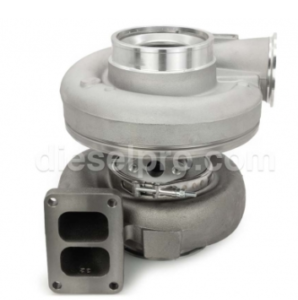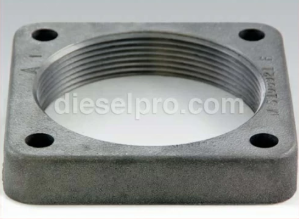
Turbocharger Inspection | Intake Manifold Maintenance
The air intake system in Cummins ISM, ISMe, and QSM11 engines plays a vital role in delivering clean, pressurized air to the combustion chambers , ensuring efficient combustion, fuel economy, and emissions compliance . The turbocharger and intake manifold are critical components of this system, responsible for boosting engine power and optimizing airflow .
A malfunctioning turbocharger or intake manifold can lead to reduced engine performance, increased fuel consumption, loss of power, and excessive exhaust smoke . Proper inspection, maintenance, and troubleshooting are essential to prevent engine damage and extend component life .
This guide provides detailed step-by-step procedures for inspecting the turbocharger, maintaining the intake manifold, diagnosing airflow issues, and ensuring optimal engine efficiency .
For specific boost pressure settings, torque values, and service intervals , consult an OEM service manual or contact Diesel Pro Power for expert assistance.
Parts Catalog for ISM Cummins Marine and Industrial Engines
Turbocharger & Related Components for Cummins ISM engine
Exhaust Manifold & Related Components for Cummins ISM engine
Parts Catalog for QSM Cummins Marine and Industrial Engines
Turbocharger & Related Components for Cummins QSM11 engine
Exhaust Manifold & Related Components for Cummins QSM11 engine
Turbocharger Inspection for Cummins ISM, ISMe, and QSM11

The turbocharger increases engine power and efficiency by compressing intake air before it enters the cylinders , allowing for more complete fuel combustion . A failing turbocharger can cause poor acceleration, excessive smoke, and loss of boost pressure .
Key Components of a Turbocharger
✔
Compressor Wheel
– Draws and compresses intake air before sending it into the engine.
✔
Turbine Wheel
– Spins using exhaust gases, driving the compressor.
✔
Wastegate or Variable Geometry Vanes
– Regulates boost pressure to prevent over-boosting.
✔
Bearing Housing and Oil Seals
– Lubricate and cool the rotating assembly.
✔
Intercooler
– Cools compressed air before entering the intake manifold.
How the Turbocharger Works
- Exhaust Gases Drive the Turbine Wheel
- The engine’s
hot exhaust gases
pass through the
turbine housing
, spinning the
turbine wheel
.
- The engine’s
hot exhaust gases
pass through the
turbine housing
, spinning the
turbine wheel
.
- The Compressor Wheel Pressurizes Intake Air
- The spinning
compressor wheel draws in and compresses intake air
, increasing
air density and oxygen levels
.
- The spinning
compressor wheel draws in and compresses intake air
, increasing
air density and oxygen levels
.
- The Intercooler Reduces Air Temperature
- The compressed air flows through the
intercooler
, which cools it before
entering the intake manifold
.
- The compressed air flows through the
intercooler
, which cools it before
entering the intake manifold
.
- Boost Pressure is Regulated
- A
wastegate (or variable vanes in VGT turbos) controls excess boost pressure
, preventing damage to the engine.
- A
wastegate (or variable vanes in VGT turbos) controls excess boost pressure
, preventing damage to the engine.
Common Turbocharger Issues and Symptoms
| Symptom | Possible Cause | Recommended Action |
| Loss of Power | Turbocharger not spinning properly | Inspect bearings, compressor wheel |
| Excessive Black Smoke | Poor air-fuel mixture due to insufficient boost | Check boost pressure, inspect air filter |
| Whining or Grinding Noise | Worn bearings, damaged compressor/turbine | Inspect turbo shaft play, check for oil leaks |
| Excessive Oil Consumption | Leaking oil seals, clogged return lines | Inspect turbo drain system, replace worn seals |
| Overheating Turbo | Lack of lubrication, restricted airflow | Check oil supply, clean intercooler |
Step 1: Inspecting the Turbocharger

- Check for Boost Pressure Leaks
- Connect a boost pressure gauge to measure pressure at full throttle.
- If pressure is
lower than specifications
, inspect for
air leaks
.
- Inspect the Compressor and Turbine Wheels
- Remove the intake piping and visually inspect the compressor wheel for damage .
- Check the
turbine wheel for cracks, missing blades, or debris buildup
.
- Check for Excessive Shaft Play
- Move the turbocharger shaft by hand ; it should spin freely without excessive movement .
- If the shaft wobbles or grinds, the
bearings may be worn
.
- Inspect the Turbocharger Oil Supply and Drain Lines
- Look for oil leaks around the turbo housing .
- Ensure the
oil return line is free of blockages
.
Step 2: Replacing a Faulty Turbocharger

- Remove the Exhaust and Intake Connections
- Loosen and disconnect the
turbocharger from the exhaust manifold and intercooler
.
- Loosen and disconnect the
turbocharger from the exhaust manifold and intercooler
.
- Disconnect the Oil Supply and Drain Lines
- Be careful
not to spill oil into the engine bay
.
- Be careful
not to spill oil into the engine bay
.
- Unbolt and Remove the Turbocharger
- Support the turbo while removing mounting bolts
to prevent damage
.
- Support the turbo while removing mounting bolts
to prevent damage
.
- Install the New Turbocharger
- Use new gaskets and O-rings to ensure a proper seal .
- Torque mounting bolts
to OEM specifications
.
- Reconnect Oil and Air Lines, then Prime the Turbo
- Before starting the engine,
manually add oil into the turbo bearing housing
.
- Before starting the engine,
manually add oil into the turbo bearing housing
.
- Start the Engine and Check for Leaks
- Let the engine idle for a few minutes to
circulate oil through the turbocharger
.
- Let the engine idle for a few minutes to
circulate oil through the turbocharger
.
Intake Manifold Maintenance for Cummins ISM, ISMe, and QSM11

The intake manifold distributes compressed air from the turbocharger evenly to the cylinders . Carbon buildup, cracked gaskets, or clogged passages can restrict airflow, reducing power and increasing fuel consumption .
Key Functions of the Intake Manifold
✔
Evenly distributes air to all cylinders
for balanced combustion.
✔
Houses sensors and EGR components
for emissions control.
✔
Ensures smooth airflow from the turbocharger
into the combustion chambers.
Common Intake Manifold Issues and Symptoms
| Symptom | Possible Cause | Recommended Action |
| Loss of Power | Clogged intake manifold, air leaks | Clean or replace manifold, check for leaks |
| Excessive Soot Deposits | EGR system malfunction | Inspect and clean EGR passages |
| Hissing Noise from Intake | Leaking manifold gasket | Replace gasket, tighten bolts |
| Rough Idle and Misfires | Uneven air distribution | Inspect and clean intake ports |
Step 1: Inspecting the Intake Manifold

- Check for Carbon Buildup and Debris
- Use a borescope to inspect the intake runners and passages .
- If excessive
carbon deposits
are present, cleaning is required.
- Inspect for Air Leaks at Gaskets and Connections
- Spray soapy water around the manifold while the engine is running .
- If bubbles appear, the manifold
is leaking air
.
- Check Sensors and EGR Connections
- Ensure the EGR valve is functioning correctly and not clogged with soot.
- Inspect
intake air temperature and pressure sensors
for contamination.
Step 2: Cleaning and Replacing the Intake Manifold

- Disconnect the Intake Piping and Sensors
- Label and remove
electrical connectors and vacuum lines
.
- Label and remove
electrical connectors and vacuum lines
.
- Unbolt and Remove the Intake Manifold
- Loosen mounting bolts
in sequence to prevent warping
.
- Loosen mounting bolts
in sequence to prevent warping
.
- Clean the Intake Manifold Thoroughly
- Use a professional intake manifold cleaner or ultrasonic cleaning for best results.
- Scrub passages with a
brush to remove stubborn carbon buildup
.
- Inspect the Gasket Surface for Damage
- If the
mating surface is uneven
, resurface or replace the manifold.
- If the
mating surface is uneven
, resurface or replace the manifold.
- Install the New or Cleaned Intake Manifold
- Use
new gaskets and torque bolts to OEM specifications
.
- Use
new gaskets and torque bolts to OEM specifications
.
- Reconnect Sensors and Piping, then Test for Leaks
- Perform a
boost pressure test
to ensure a proper seal.
- Perform a
boost pressure test
to ensure a proper seal.
Final Notes on Air Intake System Maintenance for Cummins ISM, ISMe, and QSM11
✔
Inspect turbochargers regularly for shaft wear and oil leaks.
✔
Clean or replace clogged intake manifolds to restore airflow.
✔
Check all gaskets and connections for air leaks.
✔
Perform routine maintenance to maximize fuel efficiency and engine performance.
✔
Consult Diesel Pro Power for expert guidance and high-quality replacement parts.
By following these detailed procedures , you can ensure optimal turbocharger performance, improved fuel economy, and extended engine life for Cummins ISM, ISMe, and QSM11 engines .
Parts Catalog for ISM Cummins Marine and Industrial Engines
Turbocharger & Related Components for Cummins ISM engine
Exhaust Manifold & Related Components for Cummins ISM engine
Parts Catalog for QSM Cummins Marine and Industrial Engines
Turbocharger & Related Components for Cummins QSM engine
Exhaust Manifold & Related Components for Cummins QSM engine








